Abstract
Forty-six adolescents with spina bifida were interviewed at home to find out how they felt about their situation. Some degree of misery was very common indeed but was more likely to be severe in girls than in boys. About half the girls had, on some occasion in the past year, felt that life was hopeless or not worth living. Since these feelings are related to their social isolation outside school, they might be alleviated by improved opportunities for contract with peers. This seems particularly important in view of the capacity of most teenagers to make reasonable relationships where the opportunity exists, e.g. at school or within the family. Over half those who had left school were either unemployed or very dissatisfied with their job. In addition to worries about work, preoccupations about sexual relatinships, sexual function, and marriage were common. About two-thirds of the teenagers hoped to get married and half of these thought they could have children. Girls were particularly worried about their capacity to conceive and boys had understandable concerns about potency. Very few had consulted anyone about this or had had advice about the genetic aspects of the condition and there is a clear need for adequate counseling to help such teenagers to distinguish between real and imagined fears about the consequences of their condition.
Full text
PDF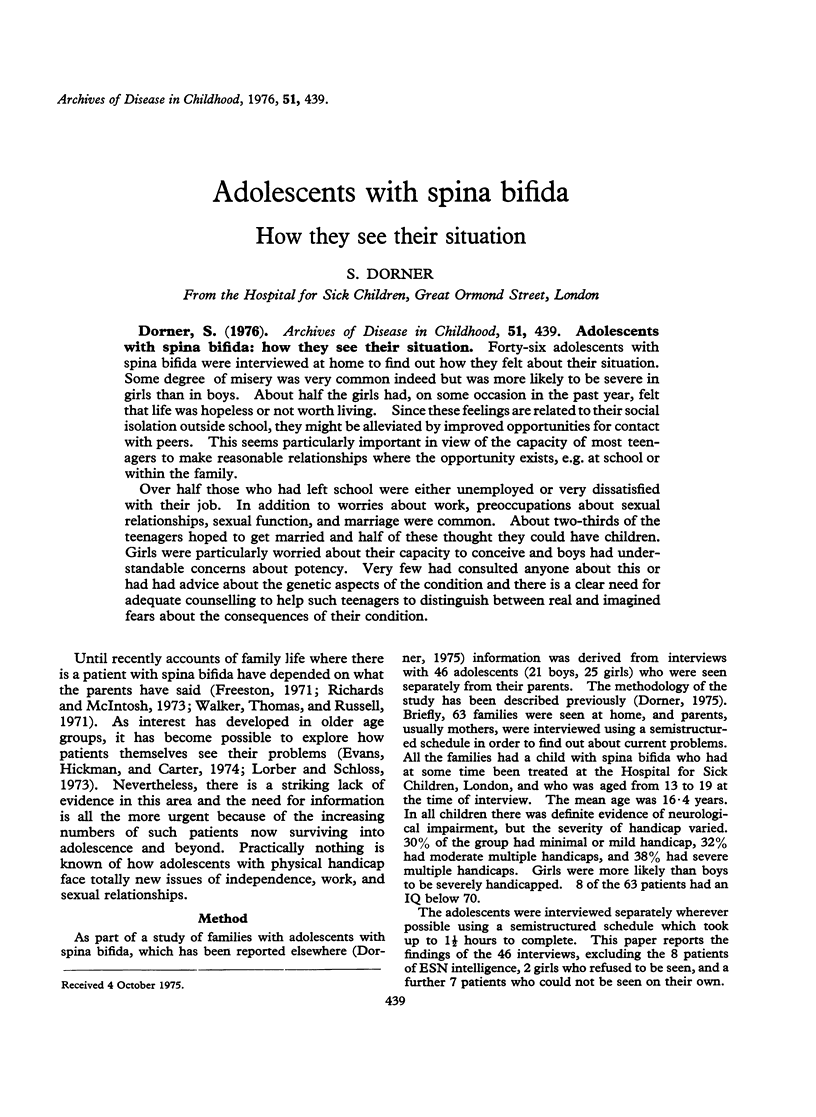
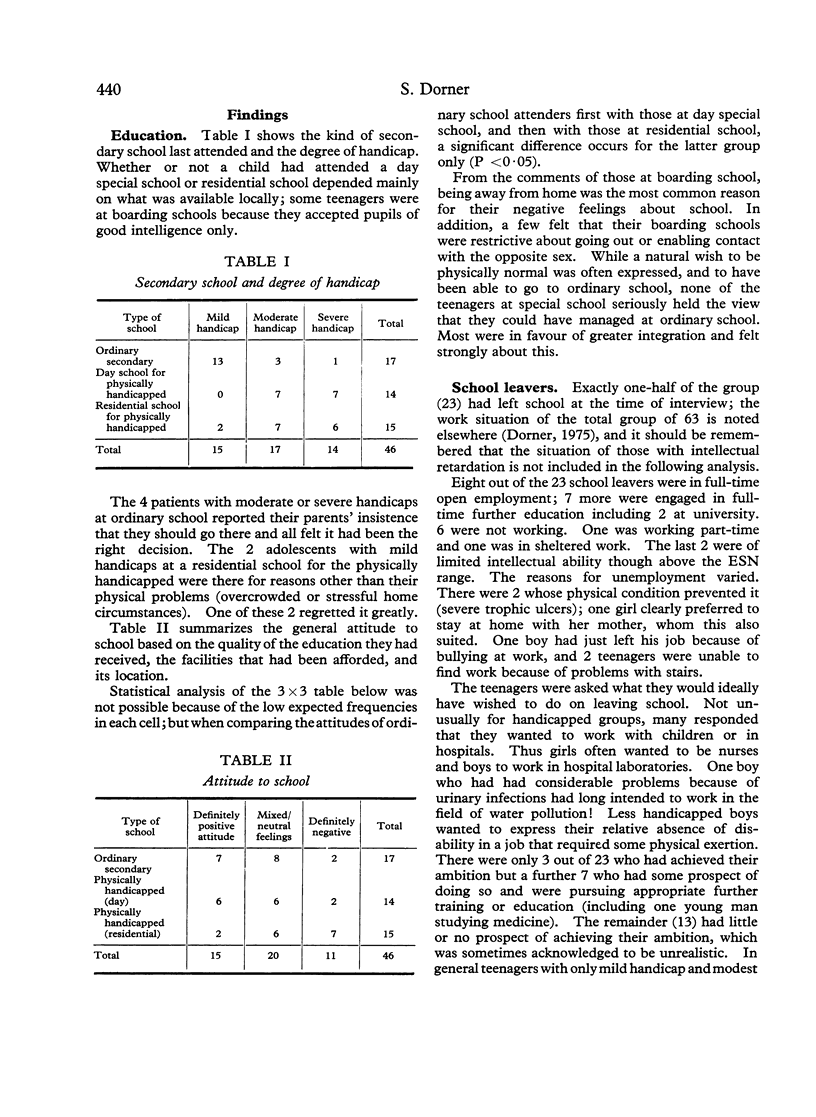
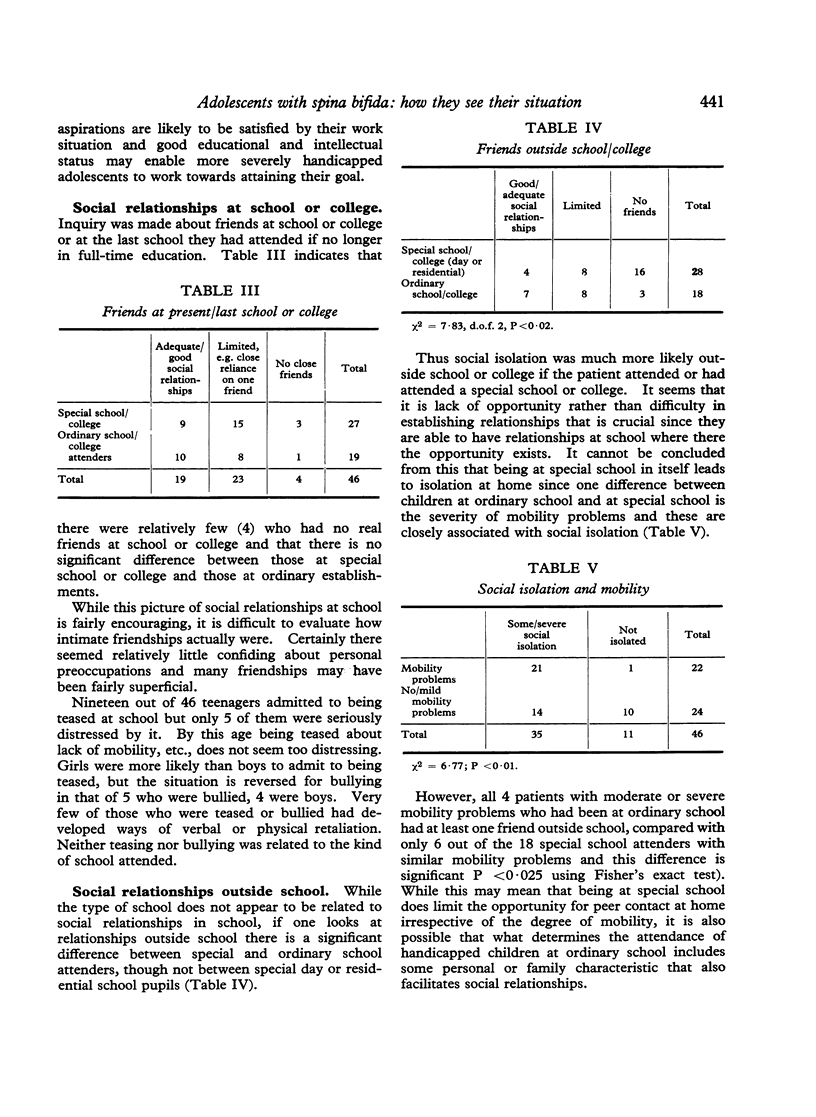
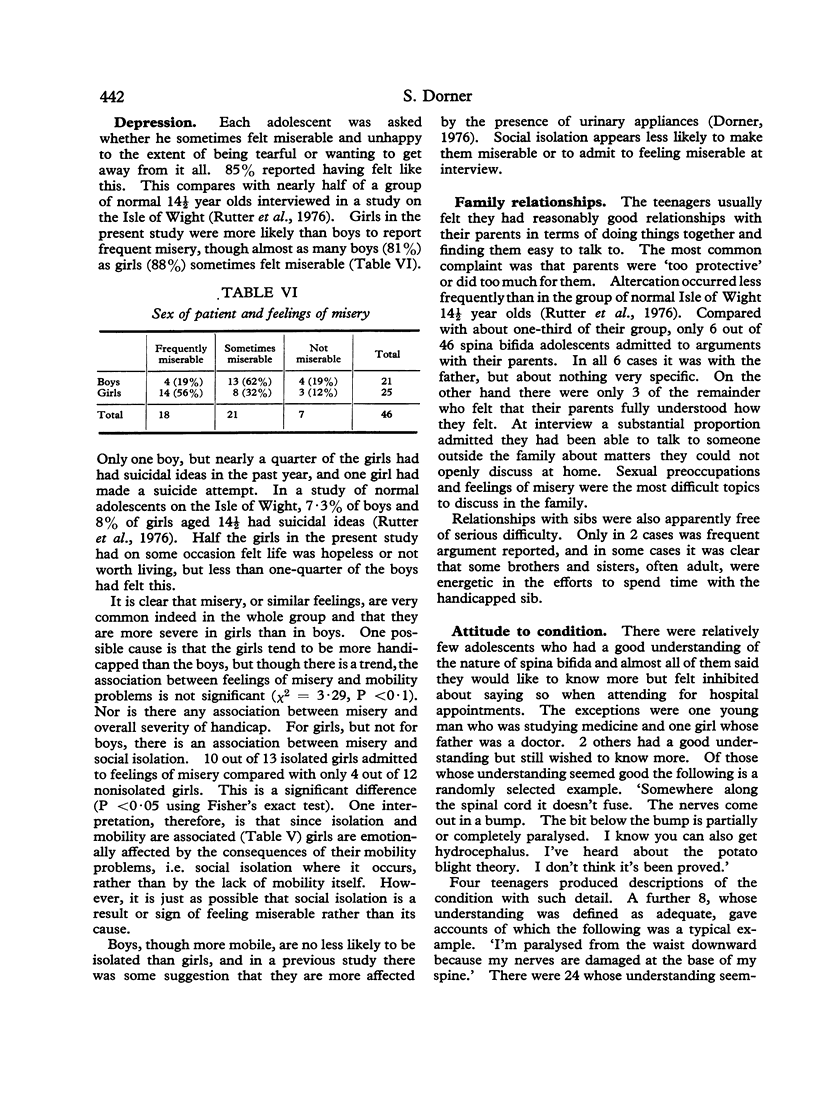
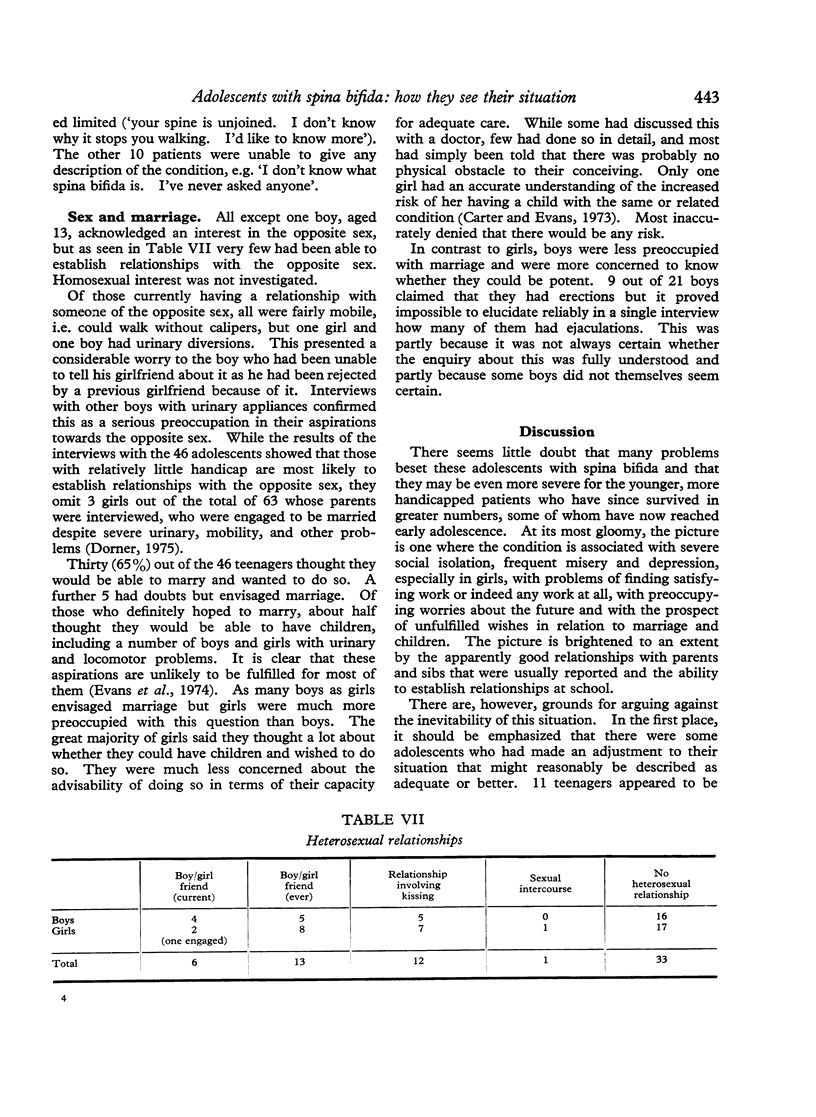
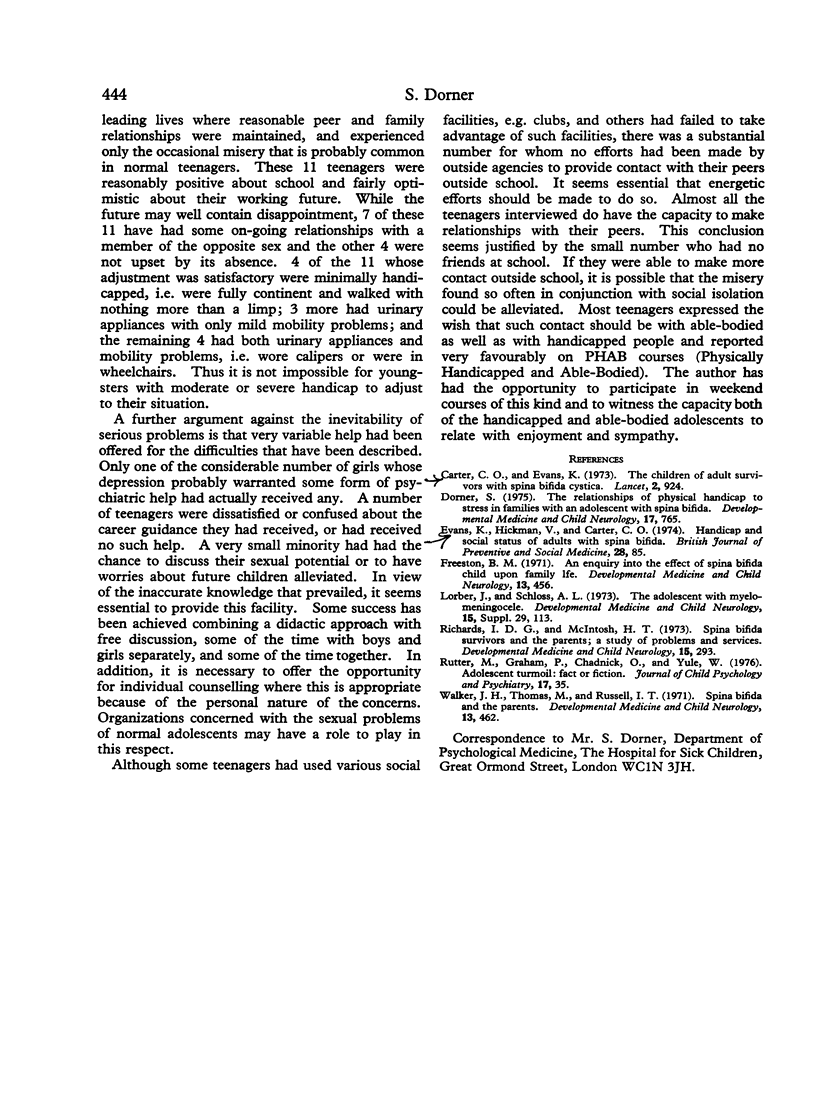
Selected References
These references are in PubMed. This may not be the complete list of references from this article.
- Carter C. O., Evans K. Children of adult survivors with spina bifida cystica. Lancet. 1973 Oct 27;2(7835):924–926. doi: 10.1016/s0140-6736(73)92593-2. [DOI] [PubMed] [Google Scholar]
- Dorner S. The relationship of physical handicap to stress in families with an adolescent with spina bifida. Dev Med Child Neurol. 1975 Dec;17(6):765–776. doi: 10.1111/j.1469-8749.1975.tb04701.x. [DOI] [PubMed] [Google Scholar]
- Freeston B. M. An enquiry into the effect of a spina bifida child upon family life. Dev Med Child Neurol. 1971 Aug;13(4):456–461. doi: 10.1111/j.1469-8749.1971.tb03052.x. [DOI] [PubMed] [Google Scholar]
- Rutter M., Graham P., Chadwick O. F., Yule W. Adolescent turmoil: fact or fiction? J Child Psychol Psychiatry. 1976 Jan;17(1):35–56. doi: 10.1111/j.1469-7610.1976.tb00372.x. [DOI] [PubMed] [Google Scholar]
- Walker J. H., Thomas M., Russell I. T. Spina bifida--and the parents. Dev Med Child Neurol. 1971 Aug;13(4):462–476. doi: 10.1111/j.1469-8749.1971.tb03053.x. [DOI] [PubMed] [Google Scholar]


